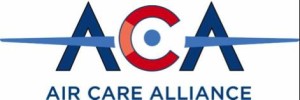by Debi Hoxter
Congratulations! You’ve identified, cultivated and solicited your donor and he/she has just made a major gift (the amount of a major gift will vary depending on the size of your organization).
At this point, many nonprofits believe their work is complete, but nothing could be further from the truth, for this is when authentic donor stewardship begins.
What is authentic donor stewardship? It is the stewarding of the individual, not just the gift, and is grounded in the desire to treat donors as partners by honoring their generosity and demonstrating how their gifts make a difference.
Remember, donors have contributed to your nonprofit because they feel a connection to your organization, its mission and the individuals involved. Nurturing donor relationships enables those who give to connect more deeply to your organization and those you serve and, as a result, make future contributions. Follow these steps to keep them connected to your nonprofit and aware their gift is appreciated.
Step One: Learn a prospective donor’s stewardship expectations before the gift is secured – or soon after
Ask the donor prospect what would be the most meaningful way to steward his/her gift, and what that would look like. Importantly, determine his/her preferred means of communication early on and for all outreach going forward, whether it be by phone or email (donors always appreciate being asked). This conversation enables you to learn more about who the donor is and what motivates him/her to give.
Step Two: Place a phone call within 24 hours of receiving the gift
Within 24 hours a phone call should be placed by your organization’s Executive Director/CEO and the person with whom the donor has the closest relationship. There is nothing that can substitute for a gracious and heartfelt “thank you,” and a donor will always remember the personal outreach.
Step Three: Send a personalized acknowledgment letter within two business days of receiving the gift
Ideally, a letter should be sent to acknowledge the donor’s gift within two days of receipt. If a template is used to create the letter, it should be personalized so that it appears to be written specifically for that donor and the donor’s partner should also be acknowledged in the letter. The dollar value of the gift should be listed in the letter and a brief explanation of the gift’s benefit to the organization.
The acknowledgment letter should always include a short, handwritten post-script.
Step Four: Communicate with your donor throughout the year to demonstrate the impact of his or her gift
Oftentimes donors feel that the nonprofit they support communicates with them only when it’s time to solicit another gift. To set your organization apart, it is critical to build your donor relationships throughout the year through authentic, customized stewardship tactics, identifying a plan that is meaningful to each donor.
For example, invite the donor to visit your organization and make introductions to staff and clients who have benefited from their generosity. Similarly, a letter from a staff member or client expressing his thanks to your donor for his gift and its impact is especially meaningful.
Smaller, donor-only events are also an ideal way to express thanks to your donors and build a sense of camaraderie among your donor base. If your nonprofit has just completed a renovation, plan an event to thank donors for their contributions and conduct first-look tours of the new offices. For those who prefer one-on-one interactions, a lunch invitation to update a donor on how his or her gift is impacting your organization would be especially meaningful.
Step Five: Make personal connections/touches throughout the year
Staying in touch on a personal basis throughout the year is certain to build your relationships with donors. Invite your donor to participate in a Career Day if applicable to your organization. Send your donor a note when a child is getting married or if a grandchild is born. These milestones should be in your database of details gathered during the cultivation step. Or, in lieu of the standard holiday card, consider sending a Thanksgiving card that expresses your gratitude.
Most important is creating a stewardship plan for each donor and developing a calendar of “touches” throughout the year. Dunleavy & Associates’ development professionals have the expertise to guide you throughout the donor cultivation, solicitation and stewardship process. To learn more, visit our website at http://matchingmissions.com
About the author: Debi Hoxter is Director, Corporate & Foundation Relations at Dunleavy & Associates. Pulling from her prior experience as Executive Director, Corporate Underwriting at WHYY, Debi works with clients to build donor and corporate relationships and create strategies for meeting revenue goals. She began her career in advertising, working first at Ted Bates and Grey advertising agencies in New York before serving as Advertising Sales Manager at Philadelphia Magazine.




